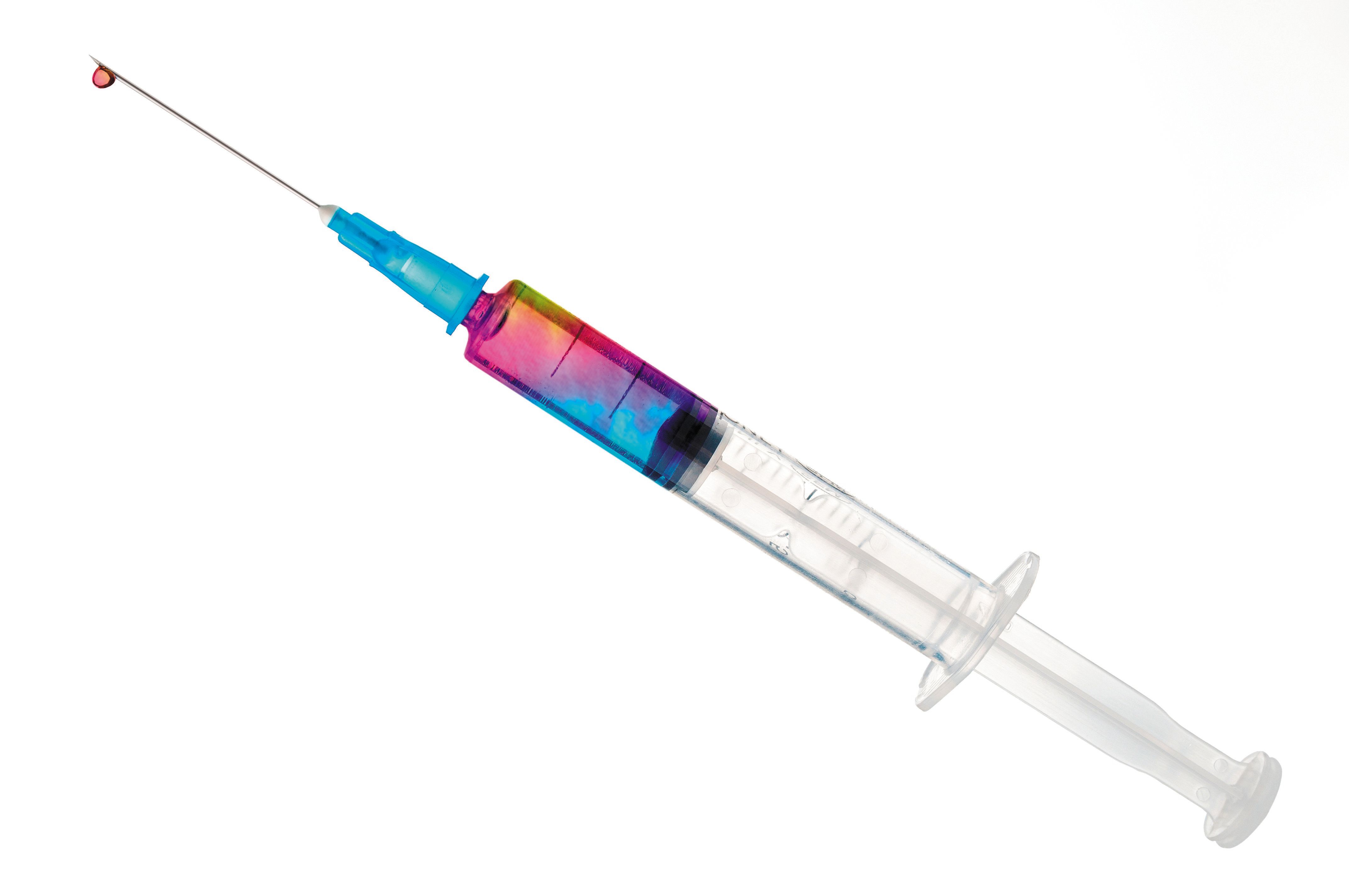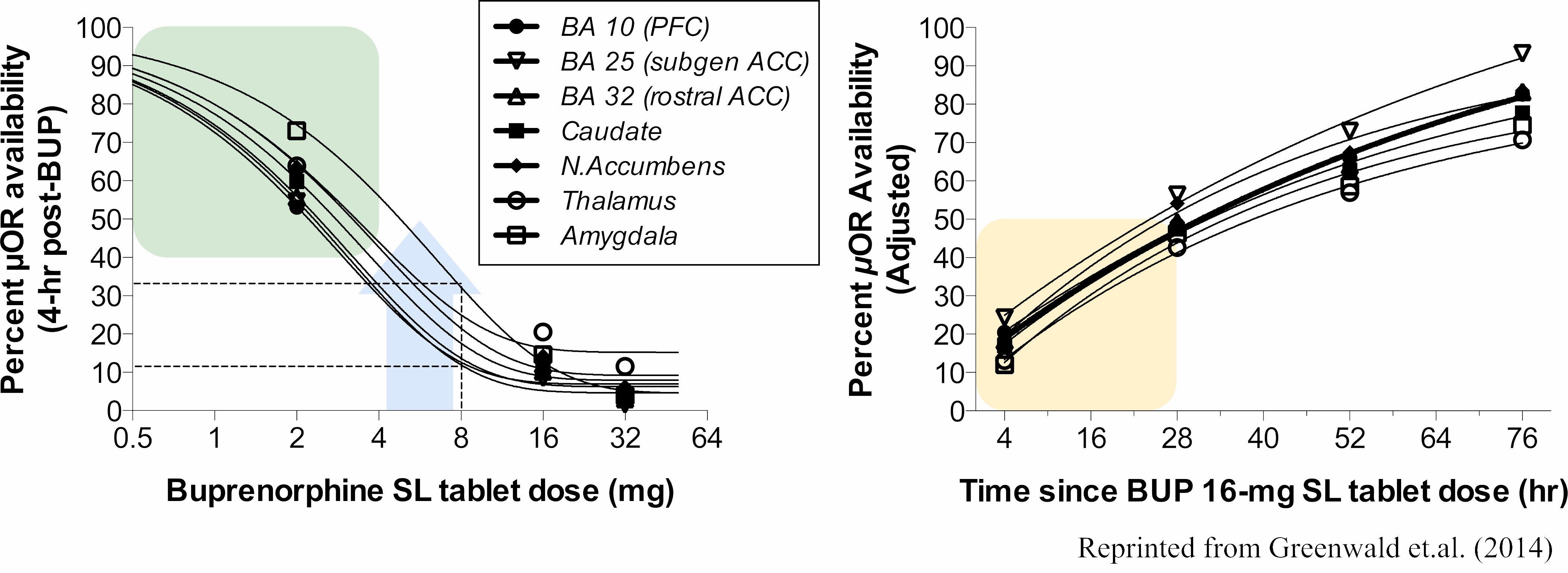Publication
Article
Psychiatric Times
Special Issues for Patients With SUDs Undergoing Surgery
Author(s):
This innovative program at Massachusetts General Hospital addresses postoperative pain while preventing relapse in patients a history of opioid use disorder.

Figure. Buprenorphine dose/time model. Reprinted with permission from Greenwald et al(8)

Advantages of Simultaneous Administration of Buprenorphine With Opioids.
ADDICTIVE DISORDERS
Given the mortality and morbidity burden of opioid use disorder, strategies to prevent further addiction are key goals among public health officials and clinicians. Nonetheless, there continue to be circumstances in which patients need adequate acute pain control. The perioperative phase is a vulnerable time for patients with opioid use disorders, but there is very little research on managing post-operative pain in these patients.
Meanwhile, the Substance Abuse and Mental Health Services Administration has made medication-assisted treatment (MAT) a priority to address the opioid problem. Emphasis was placed on buprenorphine as a novel office-based MAT with the introduction of the Suboxone, a combination buprenorphine/naloxone sublingual product available in a 4/1mg ratio.
Buprenorphine’s background
Early records indicate the sap from Papaver somniferum (opium poppy) was used for both analgesic and euphoric effects.1 The poppy plant accumulates several benzylisoquinoline alkaloids including morphine, codeine, and thebaine. Thebaine is the raw material for hydrocodone, hydromorphone, oxycodone, and other semisynthetic opiates.
To separate analgesia from euphoria, synthetic opioids were created. Unfortunately, with more analgesic potency also came increased abuse potential. In 1966, buprenorphine was synthesized; it included a cyclic propyl group which yields antagonistic effects, hence its agonist-antagonist properties.2 It seemed the long sought-after safe potent oral analgesic had been found.
Instead of achieving stardom as a pain reliever, buprenorphine became tasked for MAT because of its unique actions. Buprenorphine is a mu-opioid receptor partial agonist with properties that can provide long-lasting craving and withdrawal suppression. It has the added benefit of partial blockade of the effects of mu-opioid receptor full agonists such as heroin, oxycodone, and fentanyl. A ceiling effect on respiratory depression adds to the protective quality of this drug. It ultimately garnered attention with Suboxone’s approval in 2002 for detoxification and long-term maintenance therapy in opioid dependency.
Historically, the predicted results of mixing agents with agonist effects of varied potency at the mu-opioid receptor were based on an understanding of in-vitro binding affinities.3 With a more sophisticated understanding of the pharmacokinetic and pharmacodynamics interactions of buprenorphine, clinicians can now use this medication knowing that all mu-receptor active agents interact competitively, regardless if they are full or partial agonists.4
When patients on buprenorphine require an interventional procedure that often results in acute pain, the question arises: How do we treat this patient?
Solving the perioperative strategy for a patient receiving psychopharmacology for opioid use disorder (specifically a buprenorphine product), must encompass provision for adequate analgesia while protecting the patient from a relapse. This is especially true in the face of the current opioid crisis, with increased risk of death risk from a single exposure to adulterated illicit high potency synthetic opioids.
Clinicians and patients historically have been skeptical about using buprenorphine products in time-proximity to mu-opioid receptor full agonists; there are concerns about precipitated withdrawal and hindered analgesia. Given the high mu-receptor affinity of buprenorphine, providers of perioperative care have been worried about inadequate or complicated analgesia management. Fortunately, a more sophisticated understanding of buprenorphine that accounts for specific dose-timing proves that the simultaneous administration of buprenorphine with mu-opioid receptor full agonists is not only possible, it can produce advantages.
Developing a treatment protocol
Developing an evidence-based strategy to satisfy the conflicting priority of peri-proceduralists and addiction specialists during perioperative care of such patients required a review of extant literature to propose a consensus guideline. The goal was to create a simple yet sound protocol allowing for cooperation and communication between stakeholders.
Extant clinical data provided examples of co-administration of buprenorphine and full mu agonist opioids), and evidence of success was found (mostly in obstetrics literature).5 There were other reports with less than ideal outcomes, but these did not represent a persuasive pattern. Similarly, there was limited data for mixing buprenorphine and full mu agonist opioids in large-scale surgeries (eg, thoracic, abdominal and orthopedic). Preclinical data suggested that buprenorphine exerted overriding antagonistic effects on full mu agonist opioids at high doses, but it yielded additive analgesia with full mu agonist opioids when used at lower doses.6 Interestingly, buprenorphine’s efficacy at low doses was similar to higher potency full mu agonist opioids. The dose of buprenorphine to optimize analgesia seemed to be in the 3-4 mg range.7 Unfortunately, data on subjective craving or threshold for risk of relapse was lacking.
In a series of elegant experiments, Greenwald et al. used carbon 11-tagged carfentanil positron emission tomography imaging (11C-cPET) of μ opioid receptor (μOR) occupancy to study availability in subcortical brain substructures of patients with heroin use disorder on varying doses of buprenorphine.8 The authors concluded that craving reduction occurs in the 50% μOR occupancy range, which correlates to a 2-4mg buprenorphine dose range. Notably, in a reverse effect arm using 11C-cPET, 50% of receptors became available by 28 hours following the last exposure to a steady state dose of 16mg buprenorphine (Figure).
Using all literature reviewed, and strongly guided by the 11C-cPET data,10 a new guideline was proposed based on these key features:
- Buprenorphine provides significant analgesia at low sublingual doses, ideally 4 mg bid.
- When this dose is used in combination with full mu agonist opioids, it can produce a synergistic analgesic effect.
- Withdrawal symptoms are suppressed with μOR availability of 50-60%. μOR receptors are clinically available for analgesia within 24 hours of buprenorphine cessation in doses as high at 16 mg.
A clinical guideline was then proposed using the following parameters:
1. For procedures with minimal pain levels, continue buprenorphine doses and rely on its analgesic potency.
2. For procedures where moderate to high pain is expected (ie, historically require perioperative full mu agonist opioids):
A. Continue buprenorphine through the day before surgery; if usual doses are > 16mg buprenorphine a day, taper to 16 mg the day prior to surgery (ideally 8 mg BID).
B. Use 4mg bid throughout the perioperative period. C. Use full mu agonist opioids as required.
(For clinical ease, use readily available buprenorphine or buprenorphine/naloxone SL film product of 4 mg.)
Pre-operative and post-operative communication amongst those caring for the patient is critical. The buprenorphine-MAT provider should be involved to help reach consensus on the management plan. Addiction and/or pain consultation services should be engaged peri-operatively. Discharge planning should identify the patient’s postoperative resources and support. The hospital teams should contact the patient’s MAT prescriber to transfer buprenorphine management course and post-discharge plans and responsibilities. Non-opioid adjuvant pain medications should be considered postoperatively and post-discharge.
When buprenorphine is delivered with a careful dose/time relationship relative to administration of typical opioids, the result will yield the best balance of analgesia and protection from relapse. Specifically, by occupying approximately 50% of μOR receptors with buprenorphine, both analgesia and relapse prevention are maximized in the setting of an invasive intervention (Figure). Moreover, this strategy accounts for the fact that buprenorphine is a potent stand-alone analgesic in low doses.
Patient safety and comfort is the priority of limiting disruption of the pre-operative buprenorphine-MAT dose and continuing buprenorphine perioperatively and postoperatively. By emphasizing interdisciplinary communication while satisfying specialty clinician priorities, patient care is optimized. This protocol has been implemented at Massachusetts General Hospital since March 2018.10
CASE VIGNETTE
“Diane” a resilient 43-year old woman who presented with the need for bilateral hip replacement. She had a history of attention deficit-hyperactivity disorder; she reported she developed opioid substance use disorder in her 20s due to the ADHD and her absent father. Later, Diane was hospitalized for suicidal ideation and was diagnosed with bipolar spectrum disorder (BPSD) II. The ADHD and BPSD II were dominating and confounded by her substance use disorder.
More recently, Diane was stabilized on Suboxone MAT and has a stable BPSD regimen using oxcarbazepine. Diane reported she was nervous about surgery since she experienced relapse following other prior surgeries.
The aforementioned protocol was accepted by the patient as well as her perioperative team from a local orthopedic specialty hospital. The Friday before surgery, Diane called and said she was “too scared to go through with it.” She was reassured of the successes achieved via the protocol, and she ultimately went forward with the surgery.
Post-operatively, Diane called and said she will trust the MAT provider “100% from now on for treatment suggestions.” She added, “it was the weirdest thing. When they gave me opioids, it helped my pain, but I never felt high from it. I never considered using throughout or after the surgery.”
This article was originally posted on March 3, 2020, and has since been updated. -Ed
Disclosures:
Dr Acampora is an instructor in psychiatry at Massachusetts General Hospital and fulltime faculty at Harvard Medical School. He reports no disclosures concerning the subject matter of this article.
References:
1. Devereaux AL, Mercer SL, Cunningham CW. DARK Classics in Chemical Neuroscience: Morphine. ACS Chem Neurosci. 2018; 9(10):2395-2407.
2. Kaserer T, Lantero A, Schmidhammer H, et al. μ Opioid receptor: novel antagonists and structural modeling. Sci Rep. 2016 Feb 18;6:21548.
3. Volpe DA, McMahon, Tobin GA, et al. Uniform assessment and ranking of opioid μ receptor binding constants for selected opioid drugs. Regul Toxicol Pharmacol. 2011;59(3):385-90.
4. Khanna IK, Pillarisetti S. Buprenorphine - an attractive opioid with underutilized potential in treatment of chronic pain. J Pain Res. 2015;8:859-70.
5. Vilkins AL, Bagley SM, Hahn KA. Comparison of post-cesarean section opioid analgesic requirements in women with opioid use disorder treated with methadone or buprenorphine. J Addict Med. 2017; 11(5):397-401.
6. Kögel B, Christoph T, Strassburger W, Friderichs E. Interaction of mu-opioid receptor agonists and antagonists with the analgesic effect of buprenorphine in mice. Eur J Pain. 2005;9(5):599-611.
7. Oifa S, Sydoruk T, White I. Effects of intravenous patient-controlled analgesia with buprenorphine and morphine alone and in combination during the first 12 postoperative hours: a randomized, double-blind, four-arm trial in adults undergoing abdominal surgery.Clin Ther. 2009;31(3):527-41.
8. Greenwald MK, Comer SD, Fiellin DA. Buprenorphine maintenance and mu-opioid receptor availability in the treatment of opioid use disorder: implications for clinical use and policy. Drug Alcohol Depend. 2014;144:1-11.
9. Acampora G, Nisavic M, Zhang Y. Perioperative buprenorphine continuous maintenance and administration simultaneous with full opioid agonist: patient priority at the interface between medical Disciplines.J Clin Psychiatry. 2020;81(1):19.
10. Aurora Q, Potter K, Roth S, et al. Perioperative continuation of buprenorphine at low-moderate doses Associated with lower postoperative pain scores and decreased outpatient opioid dispensing compared to buprenorphine discontinuation. Pain Medicine. Accepted 12 January 2020.







